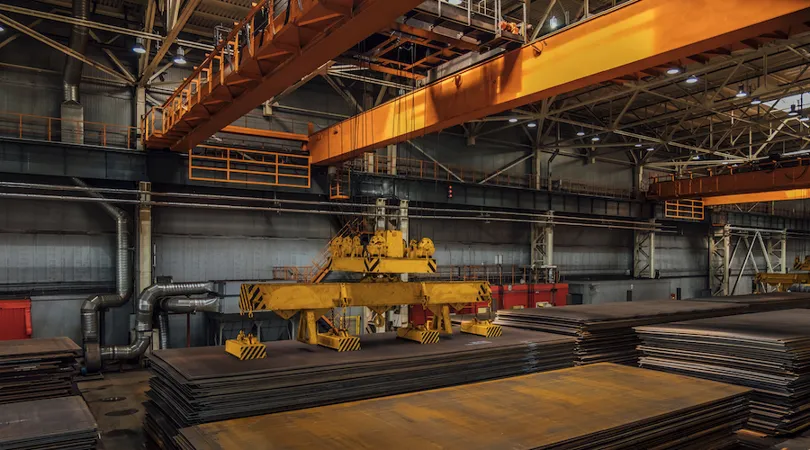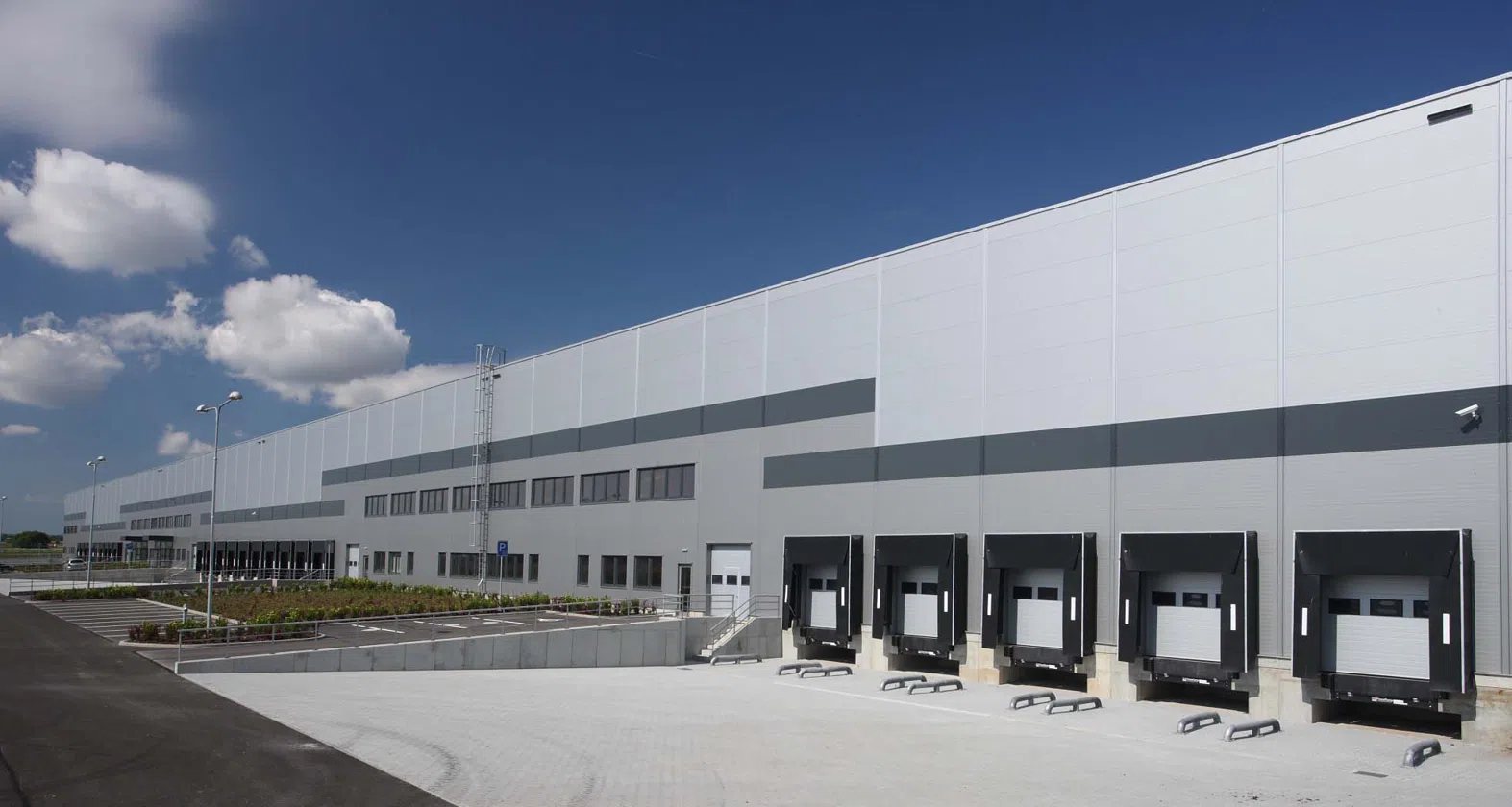Warehouse Cranes: Types, Operation, and Building Considerations
Last Updated March 13, 2024
See Our List of Metro Home Pages and Select/View Yours
 Cranes are
an integral part of many warehouses - especially those involved in heavy manufacturing, repair, storage, or shipping
of some heavy items. They facilitate the movement of large, heavy items throughout large clear areas of your
warehouse, making operations more efficient. But not all cranes are created equal, and the type of crane that would
be most beneficial to your operations largely depends on your specific needs and the building specifications.
Cranes are
an integral part of many warehouses - especially those involved in heavy manufacturing, repair, storage, or shipping
of some heavy items. They facilitate the movement of large, heavy items throughout large clear areas of your
warehouse, making operations more efficient. But not all cranes are created equal, and the type of crane that would
be most beneficial to your operations largely depends on your specific needs and the building specifications.
Outline
Different Types of Cranes
In warehouses, you will commonly encounter three main types of cranes: bridge cranes, jib cranes, and gantry cranes. Each has its unique advantages and is best suited for different kinds of tasks and spaces.
Note that there are other types of cranes - these are just a few examples. When I moved to Houston in the 70’s, I recall being introduced to the “state bird” of Texas - as you might guess, this was building cranes. These are attached to a building superstructure as it is being built, and moves up the structure as the building grows. Another type of crane that is well known and a type of hybrid crane are those you see in shipyards. They are often a combination of different crane types to span large areas and a wide array of uses and cargoes. Mobile cranes are an interesting topic, but that’s beyond our scope…
Bridge Cranes
Bridge cranes, also known as overhead cranes, span the width of the warehouse and are mounted on rails, enabling three-dimensional movement throughout large clear areas of your warehouse. They can lift, move, and place heavy items quickly and accurately. Bridge cranes are highly flexible, with lift capabilities generally ranging from 2 tons to over 200 tons.
Jib Cranes
Jib cranes are typically smaller and offer flexibility in operations that require less lifting capacity. They consist of a horizontal member (known as a jib or boom) that supports a moveable hoist. The jib can be fixed to a wall or to a floor-mounted pillar, and is able to move items within a radial area defined by the crane’s dimensions.
Gantry Cranes
Gantry cranes are similar to bridge cranes, but instead of being mounted on a suspended runway, they are supported by a frame that rests on the floor. This allows them to be more mobile and flexible than bridge cranes, but they generally have a lower lifting capacity.
Fork Lifts - Crane Alternative
Fork Lifts are treated in more detail here on Warehouse Finder in our article How to Use Forklifts in Business: Manufacturing, Distribution and More . Forklifts have been the most common non-human method for moving materials around a warehouse. Robots may be, or perhaps already are more ubiquitous as automation efforts are applied to warehousing. They are the reason why there are not more cranes. Follow our link for more discussion on the topic.
Building Requirements/Considerations for Cranes
The building requirements for a crane depend on the type of crane and its intended use. These requirements can include large or oversized overhead or sliding doors at grade level, a reinforced foundation, reinforced walls and support posts, heavy power supply, wide column spacing, and a high clear height.
Warehouse Clear Height and Crane Hook Height
Warehouse Clear Height is an issue for many reasons. Our article Clear Height in Warehouses: Understanding Its Importance and Implications discusses many of these reasons. Bridge cranes in particular benefit from large clear heights. All crane benefit, but the large investmenet required in general for bridge cranes maximizes this benefit. For many reasons including bridge cranes, the distance between support posts is also quite important. The goal for an effective bridge crane is maximize the X/Y/Z space through which the lift hook can traverse.
Crane-Equipped vs. Crane-Ready Warehouses
Saying that a facility is equipped with a crane or cranes means, of course, that there is one or more crane installation(s) already there. Since the purchase and installation of a crane can be quite expensive and time consuming, having what you need already there can be a big advantage. That said, such a crane installation might be bigger or smaller than you need - a fact that brings with it issues on either side. A larger crane can cost more to buy and to operate/maintain than necessary. Upgrading from a smaller crane to a larger crane can be expensive, if not impractical - due to things like weight requirements that cannot be met without rebuilding major part of a facility. On the other hand, a statement that a facility is “crane-ready” should also be viewed with skepticism, as it can mean many things to many people. It’s safe to say that it should be significantly less expensive to install a crane in a “crane-ready” facility, whereas it may or may not be practical in a building that is not “crane-ready.” Just make sure to quantify exactly what “crane-ready” warehouse means.
Given recent economic events involving COVID, Shipping, Supply Chain Issues, and Inflation, the issue of acquiring a property with an appropriate crane, or a given set of cranes already in place takes on even more relevance. We’ve observed in particular that the price and lead time of hoists have escalated rapidly during this time. This won’t always be the case, but in times of tight supply, it certainly should be something you are concerned about.
Heavy Power in a Warehouse
If you wish to explore heavy power in warehouses, see are article - Heavy Power in Warehouses. This is relavent in crane warehouses for several reasons:
- Moving a Bridge Crane attached and loaded hook through a warehouse area uses more power than many other warehouse types.
- Manufacturing processes and/or repairing heavy equipment requiring cranes can be power hungry.
Review our article for more detail.
Divisibility in Warehouses
If you wish to explore divisibility in warehouses further, see are article - Divisibility in Warehouses. Divisibility of Crane-Equipped Warehouses is an interesting topic - mainly relevant to landlords who own and wish to subdivide and tenants who with to lease a portion of a warehouse. For starters, divisibility is defined as the amount and configurations a landlord is willing (or able) to carve out from a larger building to lease to a tenant. This is possibly less interesting to you if you are planning to purchase a warehouse, although if you are buying it to sub-divide and lease out portions of the warehouse after purchase, then it will be relevant. While certainly possible bridge crane-served buildings, there are limits that are worth discussing. In a building with one or more bridge cranes, the minimum divisibility would generally be considered the space enclosing the movement area of one crane. Even that COULD be reduced some, but that starts to become pretty costly for the landlord as the leftover space would not be crane-equipped, or if a crane was needed, another crane would have to be installed. Let’s just say that divisibility is fairly constrained - more-so than in some building types.
Other Terms
There are a few other terms that may be of interest to you that might get you more targetted results for you search. These include terms like “Drive-in Warehouse,” “Drive-through Warehouse,” “Manufacturing Warehouse,” “Heavy Equipment Warehouse,” “Equipment Repair Warehouse,” and “Maintenance Warehouse.” The following are some features of a crane-equipped warehouse that may not have been treated already here: “Oversized Doors,” “Rollup Doors,” “Hoists,” etc. Again, we provide this to help guide you in your web searches should you find that what you need isn’t being presented to you yet.
Summary
Whether you need a crane-equipped warehouse for rent, lease, or purchase, Warehouse Finder can provide you with the right solutions tailored to your specific needs. If you need more information on warehouse cranes or help in finding the perfect warehouse, don’t hesitate to contact us.
To get started, we recommend utilizing our “Free Property Search” option located at the upper right of your screen. For real-time assistance, feel free to engage with our Chat Widget at the lower right corner. Alternatively, calling our phone number connects you directly with our knowledgeable team ready to support your search for the perfect dock-high warehouse.
